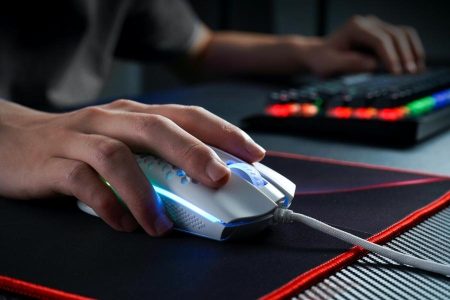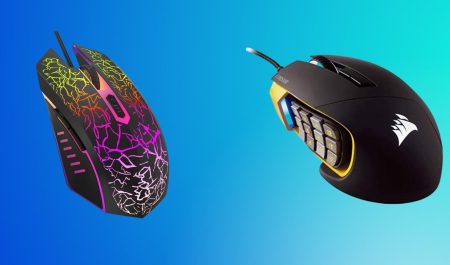In this guide, we’ll look at the specifications for a gaming mouse to determine what you need to know before upgrading your gaming experience with the best gaming mouse. We will walk you through every important aspect of your decision, from design and precision to features
Specification for Gaming Mouse
Our most useful specifications list will help you make an informed decision about the best gaming mice:
Mouse Sensitivity
The movement of a gaming mouse’s pointer is measured in CPI (count per inch) and DPI (dots per inch), and both words relate to the mouse’s sensitivity on the screen per inch or each inch count the mouse is moved. A higher DPI or CPI indicates that the mouse pointer will go farther on the screen with less physical movement.
Buttons and Programmability
The number of buttons on a mouse and their programmability can have a significant impact on gameplay. Having more buttons and the flexibility to alter their functions can provide a strategic edge to players. It is an evident advantage of gaming mice over standard mice to have more buttons to make it easier to employ macros. The existence of macro keys in the mouse allows complicated tasks to be performed with a single button push.
Polling Rate
The polling rate is related to DPI. The polling rate is the number of times per second that the mouse sends its location to the computer. DPI defines the mouse’s sensitivity to movement, in comparison, the greater polling rate results in a more rapid mouse response to your inputs and less lag between actual mouse movement and pointer movement on the screen. This means that a mouse with a low polling rate will seem sluggish, but a mouse with a high polling rate will feel snappy.
Different Sensors Types
The type of sensor used in the mouse, such as optical or laser. Different sensors have different strengths and weaknesses. Most high-end gaming mouse uses an optical sensor for accuracy and precision.
Ergonomics and Weight
The shape and weight of a mouse can affect comfort and control during extended gaming sessions. It’s important to find a mouse that fits comfortably in your hand and has a weight that you’re comfortable with. Most big-hand gamers prefer a heavier mouse while small-hand gamers are comfortable with a lighter mouse for easy maneuverability.
RGB Illumination
This feature allows customization of the mouse’s lighting to match the gamer’s setup and personal style. It’s not required, but gamers have a preference for lighting, and it’s great to see an RGB mouse that brightens up in the dark.
Wireless or Wired
Whether the mouse is wired or wirelessly linked to the computer. Wireless mice may provide greater mobility, but they may also have a larger latency. If you want a wireless mouse, choose the wireless kind, and it will need to be recharged or inserted into batteries depending on the model. In comparison, the wired mouse is the most accurate, and the only thing to worry about with wired mice is the length of the cable. A longer wire may be more convenient, while a shorter cable will be less cluttered.
Build Quality
The build quality of the mouse, including the materials used and the longevity of the buttons and scroll wheel. It’s generally the difference between cheap and expensive mice. Higher-quality mice cost more than an inexpensive mouse with inadequate build quality, such as the Logitech GL502.



